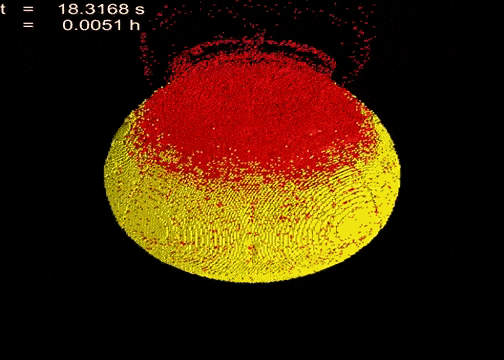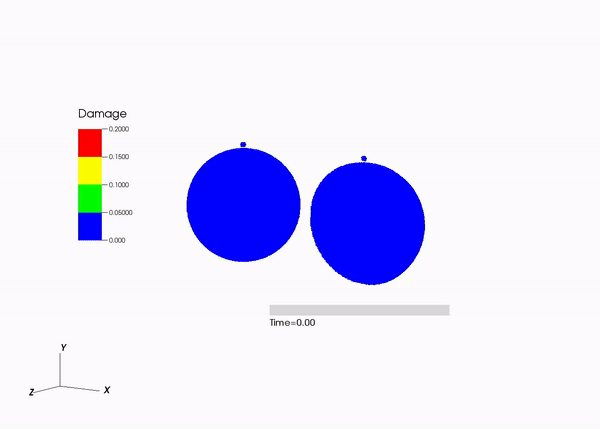We Would Never Be Able to Blow Up an Asteroid to Save the Planet, Armageddon-Style

When a science fiction plot portrays Earth in peril from a potentially devastating asteroid impact, a collection of heroes usually swoops in to save the day by detonating the enormous space rock into fragments.
But in reality, exploding a city-size asteroid may require more power than once thought, according to a new study.
Scientists had previously used computer models to estimate the impact needed to successfully shatter a big asteroid. However, a new model by another team of researchers recently came to a different conclusion by adding a variable that an older model omitted: how quickly cracks would spread through an asteroid after it was struck.
By looking more closely at small-scale changes in the asteroid's structure, the researchers developed a clearer snapshot of what would happen after an impact. Their new model suggests that gravity could help the asteroid hold itself together even after a powerful explosion and that more energy would be needed to smash the object to smithereens. [Top 10 Ways to Destroy Earth]
"We used to believe that the larger the object, the more easily it would break, because bigger objects are more likely to have flaws," lead study author Charles El Mir, a researcher with the Whiting School of Engineering at Johns Hopkins University in Baltimore, said in a statement.
"Our findings, however, show that asteroids are stronger than we used to think," El Mir said.
For their computer model, El Mir and his colleagues used the same scenario as in prior models created by other researchers: a target asteroid measuring about 16 miles (25 kilometers) in diameter gets struck by an object with a diameter of about 0.6 miles (1 km) traveling at 11,185 mph (18,000 km/h).
Sign up for the Live Science daily newsletter now
Get the world’s most fascinating discoveries delivered straight to your inbox.
Calculations from earlier studies stated that such a high-speed impact would pulverize the target. But when researchers tested the new model, they saw a different outcome. Though the target asteroid was badly damaged, its core held together, the scientists reported in the study.
Their simulation separated what happened post-impact into two stages: seconds after the impact and then hours later. Immediately after the asteroid was struck, millions of cracks radiated inward, with the model predicting where and how they would spread through the asteroid's body.

But the asteroid didn't break apart. Instead, over the hours that followed, the gravitational pull of its damaged core gathered together the rocky fragments around the core, resulting in an asteroid that was fragmented but not completely blown to pieces, the study authors reported.
While big asteroid impacts on Earth are exceptionally rare, computer models such as these can help scientists to strategize how we might defend ourselves against potentially devastating projectiles in the future, Kaliat Ramesh, a professor of mechanical engineering at Johns Hopkins' Whiting School of Engineering, said in the statement.
"We need to have a good idea of what we should do when that time comes," Ramesh said. "Scientific efforts like this one are critical to help us make those decisions."
The findings will be published in the March 15 issue of the journal Icarus.
- Crash! 10 Biggest Impact Craters on Earth
- When Space Attacks: 6 Craziest Meteor Impacts
- Fallen Stars: A Gallery of Famous Meteorites
Originally published on Live Science.

Mindy Weisberger is an editor at Scholastic and a former Live Science channel editor and senior writer. She has reported on general science, covering climate change, paleontology, biology and space. Mindy studied film at Columbia University; prior to Live Science she produced, wrote and directed media for the American Museum of Natural History in New York City. Her videos about dinosaurs, astrophysics, biodiversity and evolution appear in museums and science centers worldwide, earning awards such as the CINE Golden Eagle and the Communicator Award of Excellence. Her writing has also appeared in Scientific American, The Washington Post and How It Works Magazine. Her book "Rise of the Zombie Bugs: The Surprising Science of Parasitic Mind Control" will be published in spring 2025 by Johns Hopkins University Press.










